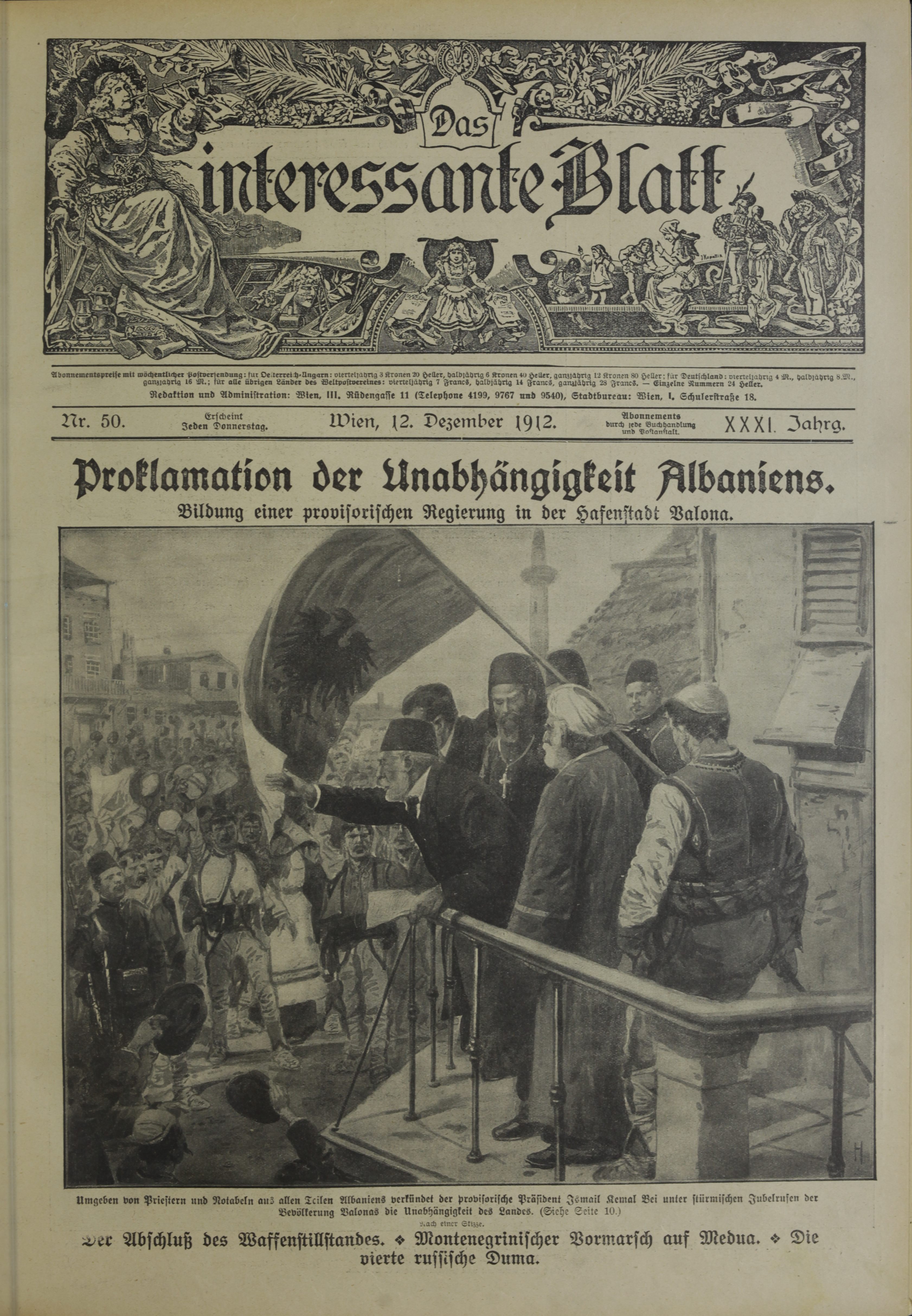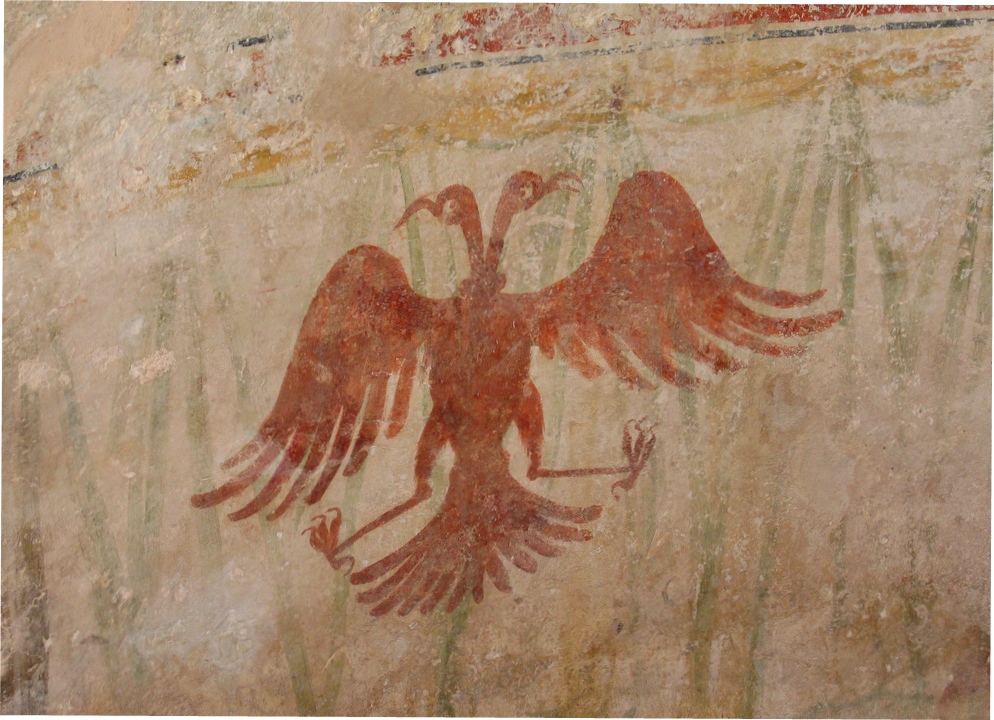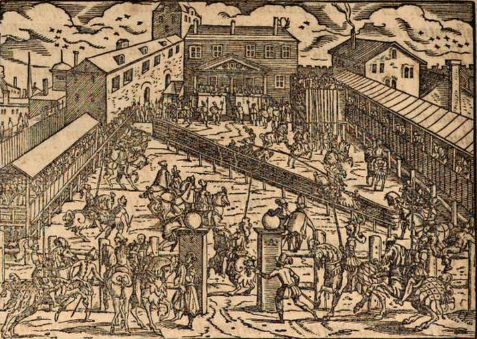|
Albanian Independence Day
Flag Day ( sq, Dita e Flamurit or ''Festa e Flamurit''), or Independence Day, is celebrated every 28 November as a holiday in Albania, Kosovo, North Macedonia and the Albanian diaspora. It refers to the Albanian Declaration of Independence on 28 November 1912 and the rise of the Albanian flag in Vlora, coinciding with the day in which Skanderbeg raised the same flag in Krujë, on 28 November 1443.{{citation, last=Drizari, first=Nelo, title=Scanderbeg; his life, correspondence, orations, victories, and philosophy, url=https://books.google.com/books?id=QYppAAAAMAAJ, year=1968, publisher=National Press, oclc=729093, page=1 See also * 100th Anniversary of the Independence of Albania * 2017 Independence Cup (Albania) References Public holidays in Albania Albania Albania Albania ( ; sq, Shqipëri or ), or , also or . officially the Republic of Albania ( sq, Republika e Shqipërisë), is a country in Southeastern Europe. It is located on the Adriatic and Ionian Sea ... [...More Info...] [...Related Items...] OR: [Wikipedia] [Google] [Baidu] |
Flag Of Albania
The flag of Albania ( sq, Flamuri i Republikës së Shqipërisë) is a red flag with a silhouetted black double-headed eagle in the center. The red stands for bravery, strength, valour and bloodshed, while the Eagle represents the sovereign state of Albania. The flag was established as the national flag of Albania when the country gained its independence from the Ottoman Empire in 1912. Origin During John Hunyadi's campaign in Niš in 1443, Skanderbeg and a few hundred Albanians defected from the Turkish ranks; for twenty-five years he scored remarkable victories against the Ottomans. He adopted the similar Byzantine imperial flag, with the double-headed eagle and the red background, and his victories brought him the papal title ''Athleta Christi''. The eagle was used for heraldic purposes in the Middle Ages by a number of noble families in Albania and became the symbol of the Albanians. The Kastrioti's coat of arms, depicting a black double-headed eagle on a red field, became f ... [...More Info...] [...Related Items...] OR: [Wikipedia] [Google] [Baidu] |
Skanderbeg's Rebellion
Skanderbeg's rebellion was an almost 25-year long anti-Ottoman rebellion led by the renegade Ottoman sanjakbey Skanderbeg in the territory which belonged to the Ottoman sanjaks of Sanjak of Albania, Albania, Sanjak of Dibra, Dibra and Sanjak of Ohrid, Ohrid (modern-day Albania and North Macedonia). The rebellion was the result of initial Christian victories in the Crusade of Varna in 1443. After Ottoman defeat in the Battle of Nish (1443), Battle of Niš, Skanderbeg, then sanjakbey of the Sanjak of Debar, mistakenly believed that Christians would succeed in pushing the Ottomans out of Europe. Like many other regional Ottoman officials, he deserted the Ottoman army to raise rebellion in his sanjak of Dibra and the surrounding region. Initially, his plan was successful and soon large parts of the Sanjak of Dibra and north-east parts of the Sanjak of Albania were captured by the rebels who also fought against regular Ottoman forces in the Sanjak of Ohrid. The rebellion of Skanderbeg ... [...More Info...] [...Related Items...] OR: [Wikipedia] [Google] [Baidu] |
Albania
Albania ( ; sq, Shqipëri or ), or , also or . officially the Republic of Albania ( sq, Republika e Shqipërisë), is a country in Southeastern Europe. It is located on the Adriatic and Ionian Seas within the Mediterranean Sea and shares land borders with Montenegro to the northwest, Kosovo to the northeast, North Macedonia to the east and Greece to the south. Tirana is its capital and largest city, followed by Durrës, Vlorë, and Shkodër. Albania displays varied climatic, geological, hydrological, and morphological conditions, defined in an area of . It possesses significant diversity with the landscape ranging from the snow-capped mountains in the Albanian Alps as well as the Korab, Skanderbeg, Pindus and Ceraunian Mountains to the hot and sunny coasts of the Albanian Adriatic and Ionian Sea along the Mediterranean Sea. Albania has been inhabited by different civilisations over time, such as the Illyrians, Thracians, Greeks, Romans, Byzantines, Venetians, and Ot ... [...More Info...] [...Related Items...] OR: [Wikipedia] [Google] [Baidu] |
Kosovo
Kosovo ( sq, Kosova or ; sr-Cyrl, Косово ), officially the Republic of Kosovo ( sq, Republika e Kosovës, links=no; sr, Република Косово, Republika Kosovo, links=no), is a partially recognised state in Southeast Europe. It lies at the centre of the Balkans. Kosovo unilaterally declared its independence from Serbia on 17 February 2008, and has since gained diplomatic recognition as a sovereign state by 101 member states of the United Nations. It is bordered by Serbia to the north and east, North Macedonia to the southeast, Albania to the southwest, and Montenegro to the west. Most of central Kosovo is dominated by the vast plains and fields of Dukagjini and Kosovo field. The Accursed Mountains and Šar Mountains rise in the southwest and southeast, respectively. Its capital and largest city is Pristina. In classical antiquity, the central tribe which emerged in the territory of Kosovo were Dardani, who formed an independent polity known as th ... [...More Info...] [...Related Items...] OR: [Wikipedia] [Google] [Baidu] |
North Macedonia
North Macedonia, ; sq, Maqedonia e Veriut, (Macedonia before February 2019), officially the Republic of North Macedonia,, is a country in Southeast Europe. It gained independence in 1991 as one of the successor states of Socialist Federal Republic of Yugoslavia, Yugoslavia. It is a landlocked country bordering Kosovo to the northwest, Serbia to the north, Bulgaria to the east, Greece to the south, and Albania to the west. It constitutes approximately the northern third of the larger geographical Macedonia (region), region of Macedonia. Skopje, the capital and largest city, is home to a quarter of the country's 1.83 million people. The majority of the residents are ethnic Macedonians (ethnic group), Macedonians, a South Slavs, South Slavic people. Albanians in North Macedonia, Albanians form a significant minority at around 25%, followed by Turks in North Macedonia, Turks, Romani people in North Macedonia, Romani, Serbs in North Macedonia, Serbs, Bosniaks in North Mac ... [...More Info...] [...Related Items...] OR: [Wikipedia] [Google] [Baidu] |
Albanian Diaspora
The Albanian diaspora ( sq, Mërgata Shqiptare or Diaspora Shqiptare) are the ethnic Albanians and their descendants living outside of Albania, Kosovo, southeastern Montenegro, western North Macedonia, southeastern Serbia, northwestern Greece and Southern Italy. The largest communities of the Albanian diaspora are particularly found in Italy, Argentina, Greece, Romania, Croatia, Turkey, Scandinavia, Germany, Switzerland and the United States. Other important and increasing communities are located in Australia, Brazil, Canada, France, Belgium, New Zealand and the United Kingdom. The Albanian diaspora is large and continues to grow, with Albanians now present in significant numbers in numerous countries, primarily in Europe and the Americas. The phenomenon of migration from Albania is recorded since the early Middle Ages, when numerous Albanians immigrated to southern Italy and Greece to escape various socio-political difficulties and the Ottoman conquest. The modern Albanian dia ... [...More Info...] [...Related Items...] OR: [Wikipedia] [Google] [Baidu] |
Albanian Declaration Of Independence
The Albanian Declaration of Independence ( Albanian: ''Deklarata e Pavarësisë'') was the declaration of independence of Albania from the Ottoman Empire. Independent Albania was proclaimed in Vlorë on 28 November 1912. Six days later the Assembly of Vlorë formed the first Government of Albania which was led by Ismail Qemali and the Council of Elders (Pleqnia). The success of the Albanian Revolt of 1912 sent a strong signal to the neighboring countries that the Ottoman Empire was weak. The Kingdom of Serbia opposed the plan for an Albanian Vilayet, preferring a partition of the European territory of the Ottoman Empire among the four Balkan allies. Balkan allies planned the partition of the European territory of the Ottoman Empire among them and in the meantime the territory conquered during First Balkan War was agreed to have status of the Condominium. That was the reason for Ismail Qemali to organize an All-Albanian Congress in Vlorë. Independence Declaration The A ... [...More Info...] [...Related Items...] OR: [Wikipedia] [Google] [Baidu] |
Albanian Flag
The flag of Albania ( sq, Flamuri i Republikës së Shqipërisë) is a red flag with a silhouetted black double-headed eagle in the center. The red stands for bravery, strength, valour and bloodshed, while the Eagle represents the sovereign state of Albania. The flag was established as the national flag of Albania when the country gained its independence from the Ottoman Empire in 1912. Origin During John Hunyadi's campaign in Niš in 1443, Skanderbeg and a few hundred Albanians defected from the Turkish ranks; for twenty-five years he scored remarkable victories against the Ottomans. He adopted the similar Byzantine imperial flag, with the double-headed eagle and the red background, and his victories brought him the papal title ''Athleta Christi''. The eagle was used for heraldic purposes in the Middle Ages by a number of noble families in Albania and became the symbol of the Albanians. The Kastrioti's coat of arms, depicting a black double-headed eagle on a red field, became f ... [...More Info...] [...Related Items...] OR: [Wikipedia] [Google] [Baidu] |
Skanderbeg
, reign = 28 November 1443 – 17 January 1468 , predecessor = Gjon Kastrioti , successor = Gjon Kastrioti II , spouse = Donika Arianiti , issue = Gjon Kastrioti II , royal house = Kastrioti , father = Gjon Kastrioti , mother = Voisava Kastrioti , birth_name = Gjergj ( see Name) , birth_date = 1405 , birth_place = Principality of Kastrioti , death_date = 17 January 1468 (aged 62) , death_place = Alessio, Republic of Venice , place of burial = Church of Saint Nicholas, Lezhë , religion = Islam Catholicism , occupation = Lord of the Principality of Kastrioti, , signature = Dorëshkrimi i Skënderbeut.svg Gjergj Kastrioti ( la, Georgius Castriota; it, Giorgio Castriota; 1405 – 17 January 1468), commonly known as Skanderbeg ( sq, Skënderbeu or ''Skënderbej'', from ota, اسکندر بگ, İskender Bey; it, Scanderbeg), was an Albanian feudal lord and military commander who led a rebellion ag ... [...More Info...] [...Related Items...] OR: [Wikipedia] [Google] [Baidu] |
Krujë
Krujë ( sq-definite, Kruja; see also the etymology section) is a town and a municipality in north central Albania. Located between Mount Krujë and the Ishëm River, the city is only 20 km north from the capital of Albania, Tirana. Krujë was inhabited by the ancient Illyrian tribe of the Albani. In 1190 Krujë became the capital of the first Albanian state in the middle ages, the Principality of Arbër. Later it was the capital of the Kingdom of Albania, while in the early 15th century Krujë was conquered by the Ottoman Empire, but then recaptured in 1443 by Skanderbeg, leader of the League of Lezhë, who successfully defended it against three Ottoman sieges until his death in 1468. The Ottomans took control of the town after the fourth siege in 1478, and incorporated it in their territories. A 1906 local revolt against the Ottoman Empire was followed by the 1912 Declaration of Independence of Albania. In the mid-1910s Krujë was one of the battlefields of the conf ... [...More Info...] [...Related Items...] OR: [Wikipedia] [Google] [Baidu] |
100th Anniversary Of The Independence Of Albania
The 100th Anniversary of the Independence of Albania was a yearlong celebration in 2012 when Albanians celebrated the 100th anniversary of establishing independent Albania, the first Albanian state in modern history. Celebration In Albania The opening day of celebration was on 17 January 2012 when the solemn ceremony was organized in parliament of Republic of Albania and attended by representatives from Kosovo, North Macedonia, Montenegro, Preševo and Bujanovac, who were together in Albanian Parliament without any distinctions like they were together in parliament of Independent Albania 100 years earlier. Most events and activities are planned to begin in October–November, and due to budgetary reasons, many other projects did not receive government funding in 2012. Kosovo Security Force formed special unit of 65 soldiers to participate in the military parade in Tirana on 28 November 2012, which was be organized to celebrate the anniversary. The government of Albania ... [...More Info...] [...Related Items...] OR: [Wikipedia] [Google] [Baidu] |






.jpg)